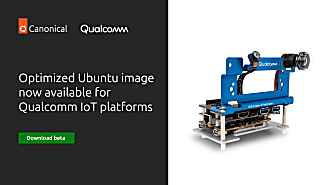Alex Cattle
on 20 November 2018
Apellix, an emerging leader in the field of aerial robotics, are creating innovative industrial solutions with the help of Ubuntu.
The development of aerial robotic systems to carry out tasks at height has taken the responsibility of dangerous activity away from human workers. With 150 workers dying everyday in the USA as a result of hazardous working conditions, there is a clear need for improved occupational safety practices. Of these deaths, 849 came as a result of falling whilst on the job, a figure that Apellix endeavours to reduce. Not only are the benefits significant from a workplace safety perspective, Apellix systems provide a cost-effective and time saving solution to such tasks.
None of this however, would be possible without software. Software is allowing the industrial world to move from analog to digital and Apellix aerial robotic systems are at the forefront of innovation.
Ubuntu enables Apellix’s aerial robotics to conduct autonomous flights without the assistance of human navigation, eliminating the risk of human error or danger which can occur with pilot operated drones. To achieve this, each aerial robot is fitted with several sensors which are constantly processing data through an Ubuntu server. The data, once processed is then sent to the autopilot electronics systems to precisely locate and control the drone in a 3D space.
Whilst the tasks that these aerial systems are carrying out may be exciting, it is the collection of data which really distinguishes what Apellix does and shows the direction in which the industry is headed. Apellix is enabling data to be gathered that previously didn’t exist. The onboard sensors are able to relay thousands of readings, which are then visible in the dynamic Apellix web portal, allowing users to display the data in an array of formats. The insights and learnings that this data provides allow for constant improvement on future tasks.
In this webinar, learn:
- How aerial robotics collect a wide range of data in order to continuously improve their processes
- How Apellix equip their aerial robotics with sensors to allow for autonomous flight
- Why Apellix utilises Ubuntu to get the best out of their aerial robotic systems
- How Apellix assisted the US navy aboard the USS George Washington




